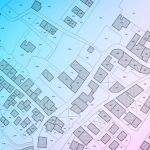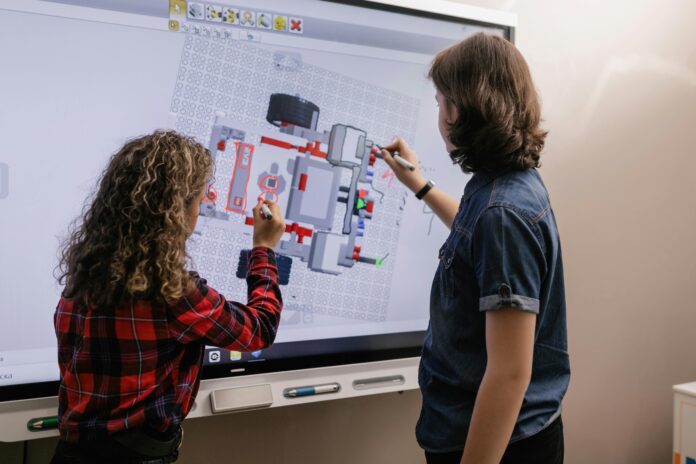The digital whiteboard (PBD) has burst into geology classrooms as a transformative technological tool, redefining the way teachers and students interact with knowledge.
The PBD not only allows you to write and draw like a traditional whiteboard, but also offers an interactive platform where information can be manipulated in real time. Geological maps, cross sections and simulations of geological processes come to life in the PBD. In this way, it captures the attention of students and facilitates the understanding of complex concepts.
PBD has several advantages. On the one hand, it connects to the internet and other devices, allowing teachers and students to access a wide range of additional resources. Satellite images, videos of geological phenomena, and scientific articles are seamlessly integrated into the dynamics of the class, enriching learning and connecting it to the real world.
On the other hand, the PBD encourages collaboration between students and allows them to work together on projects and activities. Students can share ideas, jot down notes, and draw diagrams on the whiteboard at the same time.
Advantages of using digital whiteboards in educational environments
Digital whiteboards offer multiple benefits in the educational environment:
- Interactivity: Encourages the active participation of students.
- Collaboration: Facilitates group work and collaborative projects.
- Multimedia resources: Integration of videos, images, and links in real time.
- Internet access: Allows quick searches and access to updated information.
- Saving content: Ability to store and share digital notes.
- Flexibility: Adaptation to different teaching styles.
- Visual attraction: Capture attention with dynamic graphics and colors.
- Sustainability: Reduces the consumption of paper and materials.
These advantages enhance the educational experience.
Key features of digital whiteboards
- Tactile interactivity: Allow users to interact directly with the surface using touch or a pointer.
- Connectivity: They integrate Internet connection and Bluetooth for access to online resources and other devices.
- Multimedia: Support the playback of videos, images and sound.
- Real-time collaboration: They facilitate the simultaneous participation of multiple users from different locations.
- Storage and retrieval: They save the work done for future consultations or modifications.
- Integration with applications: Compatible with educational and professional software such as Microsoft Office, Google Workspace, among others.
- Annotations and editing: They offer tools to easily add, edit and delete content.
How to integrate a digital whiteboard in the classroom
Integrating a digital whiteboard into the classroom can transform the teaching of magmatic rocks. It is recommended to follow these steps:
- Preparation:
- Install and configure the whiteboard.
- Get familiar with the software.
- Content creation:
- Develop presentations.
- Create interactive diagrams.
- Interactivity:
- Use tools to annotate.
- Implement collaborative activities.
- Multimedia resources:
- Incorporate explanatory videos.
- Use maps and 3D models.
- Assessment:
- Design interactive questionnaires.
- Perform reviews in real time.
Considerations when choosing a digital whiteboard
When selecting a digital whiteboard, it is vital to evaluate several aspects:
- Size and Space: It must adapt to the available area in the room.
- Compatibility: Make sure it works with existing hardware and software.
- Interactivity: Evaluate whether it will recognize multiple simultaneous touches.
- Durability: Opt for resistant and good quality materials.
- Image quality: Check resolution and visual clarity.
- Additional Capabilities: Review additional features such as internet connection or storage.
- Cost: Balance between budget and needs.
- Easy to use: It must be intuitive for all users.
Future and evolution of digital whiteboards in education
Digital whiteboards are revolutionizing the educational field. Its evolution promises several advances:
- Improved interactivity: The integration of artificial intelligence will allow faster and more accurate responses.
- Online collaboration: They facilitate teamwork even remotely, essential in remote learning.
- Multimedia resources: Integration with videos, applications and simulations to improve understanding of complex topics.
- Track progress: Automated and personalized evaluation systems for each student.
- Easy to use: More intuitive and accessible software for teachers and students.
This technology is constantly changing, adapting to the educational needs of the future.









![[Img #74692]](https://thelatestnews.world/wp-content/uploads/2024/12/What-do-11-and-12-year-old-boys-and-girls-300x200.jpg)

Add Comment